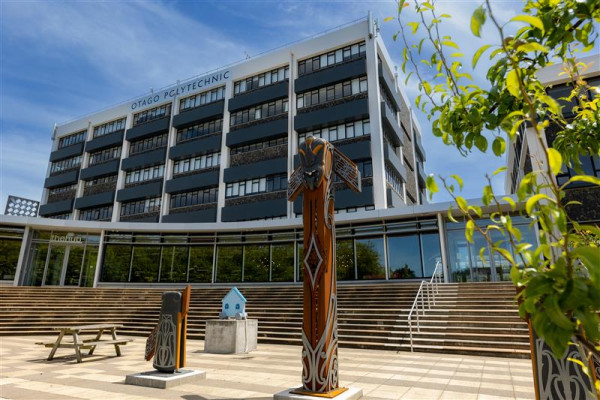- Tūhono home Hoki ki Tūhono
-
- Staff Directory
- Chief Executive Office Auckland International Office Corporate Services Finance Campus Services Functions and Catering Information Systems and Support Marketing, Communications and Engagement Learner Journey Academic Registry International Learner Services Te Punaka Ōwheo
- Learner Experience Academic Excellence Central Campus College of Community Development and Personal Wellbeing College of Engineering, Construction and Living Sciences College of Health College of Work Based Learning Open Education Resource/OERu Research and Postgraduate Studies Te Maru Pumanawa | College of Creative Practice and Enterprise
- Māori Development and Kaitohutohu Office People, Culture & Safety People and Culture Childcare Centre Te Ama Ako | Learning and Teaching Development Wellbeing and Safety Auckland Staff Directory Executive Office Academic Corporate Services Marketing and Business Development Human Resources Campus Quality and Programme Development
-
 Our people make a better world
Our people make a better world
We build the capabilities of individuals, organisations and communities and help them to realise their potential.
Staff Directory
-
- Tools
- Academic Integrity Declaration Form AIC Applications Dashboard Approved Programmes Approved Programme Fees Centralised Assessement Repository Chemwatch CMS - Tūhono & StudentHub updates Course Evaluation and Surveys CRM Applications CRM customer service hub Delegations policy/process Disability and Neurodiversity Dynamics 365 (CRM) EBS Ontrack EBS Report Email Security Personal Portal Employment Matters / Solarworkplace / Performance Reviews eTaxi eTV
- Financial Variance Reporting Hidden Disabilities Sunflower programme FCM travel intranet InPlace International entry requirements Knowledgebase articles Learner Capability Learner Support Dashboards Linkedin Learning Log a job with Marketing Login as an applicant Microsoft 365 Moderation App Moodle OP Docs OP Docs - Publishing OP Image Libraries Performance Excellence Portal Product Evaluation Panel
- Policy Library Privacy Programme and Course Design and Development Qualtrics XM RDS Remote Access Support Portal Research Database Robertson Library Staff FAQs about Graduation Status of Programmes Student Hub (Kāpehu demonstration view) Study Abroad info for learners Te Whare (Te Pūkenga intranet) Tūhauora I Wellbeing resources Uniprint Vault Webexpenses Auckland Tools
-
 Vault
Had an accident or near miss?
Log it here
Vault
Had an accident or near miss?
Log it here
-
- Communities
- Community AI Steering Committee Ally Network EBS Community of Interest EdTech Champions Health & Wellbeing Research Internal Evaluation Neurodiversity Professional Team Professoriate Proud@OP Student Support Website Advisory Group Web Champions Working under the Rainbow Project Learner Capability Trade Training Centre
- Committee Academic Committee Animals@OP Diversity and Equity Doctor of Professional Practice Committee Kaunihera Whakahaere - Leadership Council Internal Evaluation Learning & Teaching Leadership Team Library Committee Mental Health and Wellbeing Advisory Group Otago Polytechnic Board of Directors Pastoral Care Code Committee Programme Approvals Committee Research and Postgraduate Committee Research Ethics Committee Staff Subcommittee
- Think Tanks Mātauraka Our learners achieve educational success Pūtea Our financial success Tākata Our people, our team, our community Tiriti Our active commitment as a Treaty partner Tūroa Our commitment to be a sustainable and responsive organisation
-
 Create a community
Create a community
Do you have a community, committee or project that you'd like represented here?
Communities
-
- About OP
- Keep up to date All news All events All notices All blogs Share your info Create a news article Create an event Create a notice Create a blog
- Community and Partnerships Alumni and friends Education Foundation Operational information Academic calendar 2025 Academic calendar 2026 Current vacancies Dunedin campus map Our policies Te Whare (Te Pūkenga intranet) Topical FAQs
- Who we are Commemorative sites Māori Strategic Framework Our history Our strategic priorities Pasifika Strategic Framework (2025-2030) Vision and Values Working for us OP job opportunities Wellbeing Calendar Working at OP
-
New Zealand: 0800 762 786
contact us
International: +64 3 477 3014
The potentiating effects of different warm-up protocols on sprint cycling performance
Author: Tyson Huia
Supervisors: Phil Handcock Hennie Pienaar
The potentiating effects of different warm-up protocols on sprint cycling performance
Tyson Huia
11 August 2023
Huia, T. T. (2023). The potentiating effects of different warm-up protocols on sprint cycling performance. (Unpublished document submitted in partial fulfilment of the requirements for the degree of Master of Applied Science). Otago Polytechnic | Te Pūkenga, New Zealand. https://doi.org/10.34074/thes.6074
Abstract
Analysing current knowledge surrounding acute post activation potentiation (PAP) of athletic performance, this study investigated whether using accommodating resistance or modified band resistance (MBR) will enhance sprint performance more than using a standard resistance (SR) load or a standard warm-up. Investigations determined whether a modified band resistance (MBR) back squat, offered advantages over a standard resistance (SR) back squat or a standard warm-up to potentiate sprint cycling performance for athletes. The study used an experimental crossover design to examine the effects of different warm up protocols, on the potentiation of sprint cycling performance. Fifteen participants (n=8; age 18 ± 2 years; height 172.5 ± 4.2 cm; weight 66.9 ± 8.0 kg; training age 16 ± 4 months; 3RM 67.5 ± 13.6 kg) consented to participate and completed baseline testing (BL). Due to circumstances surrounding the outcome of COVID-19, only 8 participants completed all testing, subsequently affecting the reliability of the analysis. Baseline testing included a back squat three-repetition maximum (3RM), 250m time trial (5, 10, 125, 250m splits recorded) from a standing start position.
Pre-testing measurement of a three-repetition max (RM) for a squat, seven days before BL testing of warm-up protocols. The testing order adhered to on each occasion was: standard warm-up (SWU), standard resistance (SR) and the modified resistance (MBR). Testing was conducted at a standardised time of day for each testing session and in accordance with normal hub training session timings. Data also consisted of a subjective measurement as participants were asked to record their differentiated perceived effort (RPE) following each warm-up protocol. Objective data collected from the sprint cycling performance represented the dependent variables which were analysed; specifically, the maximal effort 250 metre (m) time trial along with split times (5, 10, 125m).
In addition, power data after each testing session were also summarized using appropriate software designed specifically for the purpose of evaluating Schoberer Rad Messtechnik (SRM) data collected from track cyclists. Power output was expressed as watts (W) was calculated as the highest power achieved for each session. All data was presented as the average (± SD) of the trial at each split during each testing session. This data was then analysed using t-Test (paired between two sample for mean) with significance set at P ≤ 0.05. In addition, time trial data was analysed using magnitude-based inferences. Comparisons of individual SWU bike speeds for SR and MBR was analysed. The current findings recognised, at the 5m point SR offers a likely small benefit (0.03s; 0.0091; 99.5% chance) compared with MBR. At the 10m split SR again offers advantages over SWU (possibly; 25% chance; 0.034; 0.02) and MBR (very likely, 99.5% chance; 0.047; 0.016). There is a likely small effect (95% chance) that SR offers a benefit over MBR at the 250m time (0.28; 0.13). Regarding power data, only five participants only had access to power meters however this information was used to provide insight into the potentiating effects of different warm-up protocols.
This study aims to advance the general understanding on the potentiating effects of different warm-up protocols for sprint cycling performance and will help inform the practice of physical preparation coaches, specialist coaches, and cyclists.
Keywords: post-activation potentiation, warm-up protocols, sprint cycling, band resistance, track cycling
Licence
A copy of the thesis is publicly available under a Creative Commons Attribution Non-Commercial No Derivatives licence CC BY-NC-ND 4.0 International
![]()